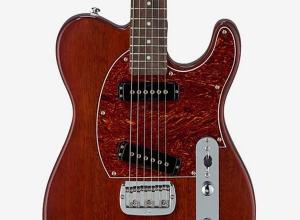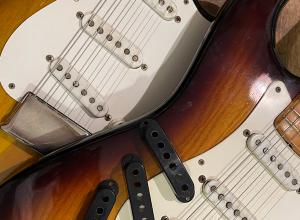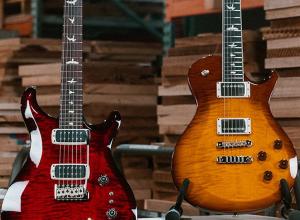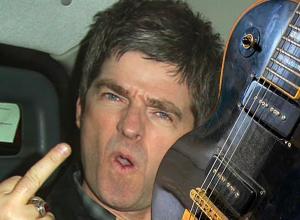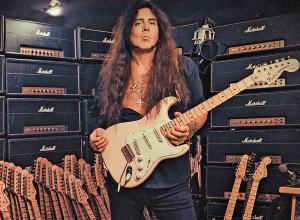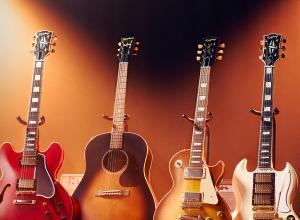Ma quella che appare come un’opportunità si trasforma presto in un incubo: i nuovi management non sanno nulla di strumenti musicali e si concentrano solo sul taglio dei costi per aumentare i profitti. Si innesca così un calo qualitativo che nel corso dei due decenni successivi avrà influenze importanti su tutto il settore. Quando il prodotto peggiora la prima conseguenza è una calo delle vendite: per Gibson e Fender nella prima metà degli anni ’80 il calo è talmente drammatico da portare le due aziende al limite del fallimento.
![1978-1984 David Schecter e le sue macchine dei sogni [IT-EN] 1978-1984 David Schecter e le sue macchine dei sogni [IT-EN]](https://www.accordo.it/cloud-assets/00/redazionea5a/images/163750dream-1.jpg)
Questa crisi produce però due effetti interessanti. Il primo è una crescita di attenzione per le chitarre degli anni passati, che da “modelli vecchi”, da accantonare se non rottamare, diventano i sempre più costosi e ricercati strumenti “vintage”. Il secondo effetto è la nascita di un ricco sottobosco di piccole aziende a carattere artigianale o semi artigianale che rispondono alla domanda di una qualità scomparsa dalla produzione dei top brand.
Tra i primi a imboccare questo cammino c’è David Schecter, un liutaio californiano che a inizio anni ’70 apre un laboratorio a Van Nuys (California) e si specializza nella produzione di componentistica destinata a sostituire le parti originali sulle Fender dell’epoca: prima i manici, poi i corpi e infine l’hardware. Gli affari vanno talmente bene che nel 1977 una finanziaria texana (International Sales Associates) propone a David di investire nella sua azienda. Lui accetta e grazie all’iniezione di denaro può permettersi un aiutante. Il prescelto è un giovane liutaio appassionato di elettronica, tanto che contribuirà allo sviluppo dei pickup F500T, componente essenziale dell’inconfondibile suono delle Schecter dell’epoca d’oro. Quel giovane si chiama Tom Anderson, destinato a diventare uno dei più stimati costruttori di chitarre boutique.
Qui vale la pena di fare una breve digressione sui pickup. In quell’epoca l’offerta di amplificatori hi-gain – i top seller nel decennio successivo – è pressoché inesistente. A parte alcune modifiche ai circuiti Fender (principalmente i primi lavori di Randall Smith, fondatore di Mesa Engineering), la grande ricerca di saturazione è sui pickup, dove Larry Di Marzio ha l’idea di dare potenza aumentando gli avvolgimenti, portandoli dagli 8-9.000 dei classici pickup Fender a 14-15.000 o più. Lo scotto da pagare è la perdita del classico suono cristallino che caratterizza le chitarre Fender. Per ovviare a questo inconveniente Schecter e Anderson inventano il primo pickup “tapped”, il cui avvolgimento ha due uscite, una a metà e una alla fine dell’avvolgimento. Grazie a uno switch (quelli visibili sulle Dream Machine di Mark Knopfler) è possibile selezionare per ciascun pickup tutto l’avvolgimento la massima saturazione o solo metà per i classici suoni Fender.
Oltre a questa caratteristica unica all’epoca, le chitarre Schecter uniscono una costruzione impeccabile a un’estetica innovativa grazie ai legni esotici che David utilizza. Il mondo della chitarra resta a bocca aperta di fronte a corpi e manici in shedua, koa, cocobolo, pau ferro, purple heart, paduak, zebrawood, teak, koa, anjico, imbuya e ai manici in acero fiammato.
Il catalogo Schecter cresce di giorno in giorno, fino a contenere 400 articoli diversi, tra manici e corpi in innumerevoli varianti di legno, hardware ed elettroniche. Il nome comincia a circolare tar i musicisti, soprattutto perché alcuni tra i negozi di strumenti più frequentati dalle rock star (Rudy’s Music a New York, Strings & Things a Memphis, Rokin’ Robin a Houston, Valley Arts a Los Angeles) assemblano per i loro clienti più facoltosi chitarre Fender-style con componentistica Schecter.
Nel 1979 David Schecter decide finalmente di mettere in catalogo anche le chitarre finite. Da quando Mark Knopfler, Lou Reed e Pete Townshend salgono sul palco con i suoi strumenti la domanda è cresciuta esponenzialmente. Purtroppo la sua capacità produttiva non è in grado di accontentare tutte le richieste e le Schecter sono introvabili, tanto che qualcuno si inventa il nomignolo “Dream machine”, sia per definire la qualità sonora, sia perché riuscire ad averne una è un sogno per quasi tutti. Questo nomignolo verrà addirittura ripreso dall’azienda nella propria campagna pubblicitaria.
![1978-1984 David Schecter e le sue macchine dei sogni [IT-EN] 1978-1984 David Schecter e le sue macchine dei sogni [IT-EN]](https://www.accordo.it/cloud-assets/00/redazionea5a/images/163750dream-2.jpg)
Sovrastato dall’enorme successo e da una domanda cui non riesce a far fronte, spinto dai finanziatori della ISA che vogliono vedere i frutti del loro investimento, David deve inventarsi qualcosa per produrre di più. Va a Tokyo assieme al giovane Tom Anderson, visita fabbriche, incontra persone, ma non trova quello che cerca, tanto che dopo un po’ perde l’entusiasmo, torna in America, cede la sua quota di proprietà alla ISA e sparisce dalla circolazione.
Uscito di scena il fondatore, ISA decide di spostare la Schecter in Texas. La buona qualità degli strumenti rimane per qualche mese, fino all’esaurimento dell’enorme magazzino di componentistica originale (su questa vicenda girano alcune storie secondo le quali in realtà il “passaggio di proprietà” sia stato in realtà un furto, ma nessuna è verificata, quindi evitiamo di riportarle).
A Dallas si modificano i circuiti, passando dai tre microswitches e due potenziometri a tre potenziometri e switch a cinque posizioni, con un circuito dei toni che consente comunque di imitare la brillantezza dei single coil Fender. Poi, quando il magazzino ereditato da Van Nuys va in esaurimento l’hardware viene commissionato a produttori orientali. È una scelta che segna l’inizio di un declino che si rivelerà inarrestabile.
A Tom Anderson l’idea di trasferirsi in Texas non era piaciuta, tanto che quando David aveva ceduto la Schecter si era dimesso e aveva aperto un’azienda col proprio nome. Per alcuni anni, fino al 1988, produrrà esclusivamente componentistica per accontentare gli assemblatori abituati a usare parti Schecter e rimasti privi di forniture.
Il periodo texano di Schecter dura poco meno di quattro anni: nel 1986 ISA decide di sbarazzarsi del giocattolo che non produce utili. La decisione è prodotta anche alle azioni giudiziarie che la nuova proprietà di Fender sta avviando nei confronti di chi costruisce chitarre con le forme di Stratocaster e Telecaster. Finché Schecter produceva solo componenti si chiudeva un occhio, ma in un momento di rilancio, il manager Bill Schultz non può accettare che nei negozi compaiano chitarre fatte e finite uguali alle Fender, ma con un logo diverso. Per qualche tempo le Schecter mantengono la paletta Fender, poi devono cedere a un design proprio che però sottrae identità al brand.
![1978-1984 David Schecter e le sue macchine dei sogni [IT-EN] 1978-1984 David Schecter e le sue macchine dei sogni [IT-EN]](https://www.accordo.it/cloud-assets/00/redazionea5a/images/163751dream-3.jpg)
ISA cede il brand Schecter a Hisatake Shibuya, un imprenditore giapponese già proprietario del Musician Institute e di ESP Guitars. Shibuya capisce l’importanza dello sticker “made in USA” e riporta in California la produzione degli strumenti top di gamma. A distribuirli compare Aspen Pittman, fondatore e manager di Groove Tubes, che chiede anche una produzione orientale, con caratteristiche simili e prezzi dimezzati, da affiancare a quella californiana. Si genera un vortice di auto-concorrenza molto diffuso all’epoca che genera confusione nei consumatori.
L’azienda vivacchia fino al 1996, quando Hisatake Shibuya conosce Michael Ciaravolo, un brillante musicista che lavora presso uno dei pochi distributori Schecter rimasti, Sunset Custom Guitars. Il feeling è immediato e Michael viene nominato presidente della Schecter Guitar Research. Sarà lui a sganciare l’azienda dalla sudditanza progettuale nei confronti di Fender e a incentivare la nascita dei design originali che hanno caratterizzato il brand negli anni a seguire fino ai nostri giorni.
[EN] 1978-1984 David Schecter and his dream machines
In the second half of the Sixties the electric guitar market experienced a magical moment. Sales skyrocket and attract the interest of major investors, who began shopping around for companies in the industry. These include Gibson and Fender, which enter the orbit of CMI (later Norlin) and CBS, respectively.
What appears to be an opportunity, however, soon becomes a nightmare: the new managements know nothing about musical instruments, their only concern is cost cutting to increase profits. This short-sighted strategy triggers a decline in quality that over the next two decades will have an adverse influence on the entire industry. When the product deteriorates the first consequence is a drop in sales, which for Gibson and Fender is so dramatic that it brings the two companies to the brink of bankruptcy in the first half of the Eighties.
![1978-1984 David Schecter e le sue macchine dei sogni [IT-EN] 1978-1984 David Schecter e le sue macchine dei sogni [IT-EN]](https://www.accordo.it/cloud-assets/00/redazionea5a/images/163750dream-1.jpg)
However, this crisis also produces two interesting effects. The first is a growth in attention to guitars of the past, which from “old stuff”, to be set aside or even scrapped, become increasingly expensive and sought-after “vintage”. The second effect is the emergence of a rich undergrowth of small companies who respond to the demand of the quality that has disappeared from the production of top brands.
Among the first to follow this path is David Schecter, a Californian luthier who runs a small store in Van Nuys, California. Davis specializes in manufacturing components designed to replace the original parts on Fenders guitars: necks, bodies, eventually hardware. Business is good and in 1977 a Texas finance company (International Sales Associates) offers him to invest in his company. David accepts and takes advantage of the cash injection to hire a helper. The chosen one is a young luthier passionate about electronics, who will help him develop the F500T pickups, an essential component of the unmistakable sound of Schecter’s golden age. That young man’s name is Tom Anderson, destined to become one of the most respected builders of boutique guitars.
A brief digression on pickups is worthwhile here. In that era, the supply of hi-gain amplifiers -the top sellers in the next decade- is almost nonexistent. Apart from a few modifications to Fender circuits (mainly the early work of Randall Smith, founder of Mesa Engineering), the focus is on pickups, with Larry Di Marzio giving power to the output by increasing the windings, taking them from the 8-9,000 of classic Fenders to 14-15,000 or more of his hot-rods. The trade-off is the loss of the classic crystal clear sound that characterizes Fender guitars. To remedy this, Schecter and Anderson invent the first “tapped” pickup, whose winding has two outputs, one from the middle and one from the end of the winding. Thanks to a switch (clearly visible on Mark Knopfler’s dream machines) it is possible to select for each pickup the full winding for maximum saturation or half winding for classic Fender sounds.
In addition to this unique feature, Schecter guitars combine impeccable construction with innovative aesthetics thanks to the exotic woods that David decides to use. The guitar world stands in awe at bodies and necks made of shedua, koa, cocobolo, pa ferro, purple heart, paduak, zebrawood, teak, koa, anjico, imbuya, and spectacularly flamed maple necks.
The Schecter catalog grows by the day to contain 400 different items, including necks and bodies in countless variations of wood, brass hardware, and electronics. The name begins to circulate among musicians, especially as some of the instrument stores most frequented by the rock stars (Rudy’s Music in New York, Strings & Things in Memphis, Rokin’ Robin in Houston, Valley Arts in Los Angeles) start to assemble Fender-style guitars with Schecter components for their wealthier customers.
Since Mark Knopfler, Lou Reed, and Pete Townshend take the stage with Schecter instruments, demand has grown exponentially and in 1979 David decides to add finished guitars to his catalog as well. Unfortunately, his production capacity is unable to accommodate the demand. Schecter guitars are virtually unobtainable and someone comes up with the nickname “Dream machine,” both to define the sound quality and because being able to get one is a dream for almost everyone. The nickname will be taken up by Schecter in its advertising campaigns.
![1978-1984 David Schecter e le sue macchine dei sogni [IT-EN] 1978-1984 David Schecter e le sue macchine dei sogni [IT-EN]](https://www.accordo.it/cloud-assets/00/redazionea5a/images/163750dream-2.jpg)
Overwhelmed by the enormous success and a demand he cannot cope with, urged on by ISA’s backers who want to see the fruits of their investment, David has to come out with an idea to increase production and eventually he decides to go to Tokyo along with young Tom Anderson, to visits factories and meets people, looking for someone who can produce on his behalf. But after a while, dissatisfied with the results of his quest, he loses enthusiasm, returns to America, gives up his ownership stake in favor of ISA and disappears from sight.
With the founder gone, ISA decides to move Schecter to Texas. Good quality instruments remain for a few months, until the huge stock of original components is exhausted (there are some stories circulating about the “transfer of ownership” being actually a theft, but none are verified, so we avoid reporting them).
In Dallas, the circuitry is soon changed from the three microswitches and two potentiometers to three potentiometers and a five-position switch, with special tone circuitry allowing to mimic the Fender single coil sounds. But when the stock inherited from Van Nuys runs out, the hardware is commissioned from Far Eastern manufacturers, a choice that marks the beginning of a decline that will prove unstoppable.
Tom Anderson had not liked the idea of moving to Texas: when David had sold Schecter he had resigned and opened a company under his own name. For a few years, until 1988, he would produce only components for the assemblers who used Schecter parts and were left without supplies.
Schecter’s Texas period lasts just under four years, then in 1986 ISA decides to get rid of the unprofitable toy. The decision is also produced by the legal actions being taken by Fender’s new ownership against companies building guitars in the shapes of Stratocasters and Telecasters. As long as Schecter produced only components they turned a blind eye, but at a time of Fender’s revival, Bill Schultz cannot accept to see in the stores made-and-finished guitars identical to his own, but with a different logo. For some time Schecter retaines the Fender headstock, then has to give in to its own design that, however, subtracted identity from the brand.
![1978-1984 David Schecter e le sue macchine dei sogni [IT-EN] 1978-1984 David Schecter e le sue macchine dei sogni [IT-EN]](https://www.accordo.it/cloud-assets/00/redazionea5a/images/163751dream-3.jpg)
ISA sells the Schecter brand to Hisatake Shibuya, a Japanese entrepreneur who already owns the Musician Institute and ESP Guitars. Shibuya realizes the importance of the “made in the USA” sticker and brings production of the top-of-the-line instruments back to California. Aspen Pittman, founder and manager of Groove Tubes distributes them, and calls for Eastern production, with similar features and half the price, to go along with the California production. It’s a maelstrom of self-competition that was as widespread at the time as deleterious, because of the confusion generated in consumers.
The company thrives until 1996, when Hisatake Shibuya meets Michael Ciaravolo, a brilliant musician working at one of Schecter’s few remaining distributors, Sunset Custom Guitars. The chemistry is immediate, and Michael is named president of Schecter Guitar Research. He will be the one to disengage the company from a design subservience to Fender and to spur the birth of the original designs that have characterized the brand in the years to follow to the present day.
Cover photo by Rachel Isbey. |
 VINTAGE VAULT
VINTAGE VAULT
 SHG MUSIC SHOW
SHG MUSIC SHOW
 PEOPLE
PEOPLE
 STORE
STORE
 - Privacy - Accordo.it Srl - P.IVA 04265970964
- Privacy - Accordo.it Srl - P.IVA 04265970964
![1978-1984 David Schecter e le sue macchine dei sogni [IT-EN] 1978-1984 David Schecter e le sue macchine dei sogni [IT-EN]](https://www.accordo.it/cloud-assets/730x450/redazionea5/images/deco/105091_dream-g.jpg)
![1978-1984 David Schecter e le sue macchine dei sogni [IT-EN] 1978-1984 David Schecter e le sue macchine dei sogni [IT-EN]](https://www.accordo.it/cloud-assets/00/redazionea5a/images/163750dream-1.jpg)
![1978-1984 David Schecter e le sue macchine dei sogni [IT-EN] 1978-1984 David Schecter e le sue macchine dei sogni [IT-EN]](https://www.accordo.it/cloud-assets/00/redazionea5a/images/163750dream-2.jpg)
![1978-1984 David Schecter e le sue macchine dei sogni [IT-EN] 1978-1984 David Schecter e le sue macchine dei sogni [IT-EN]](https://www.accordo.it/cloud-assets/00/redazionea5a/images/163751dream-3.jpg)
